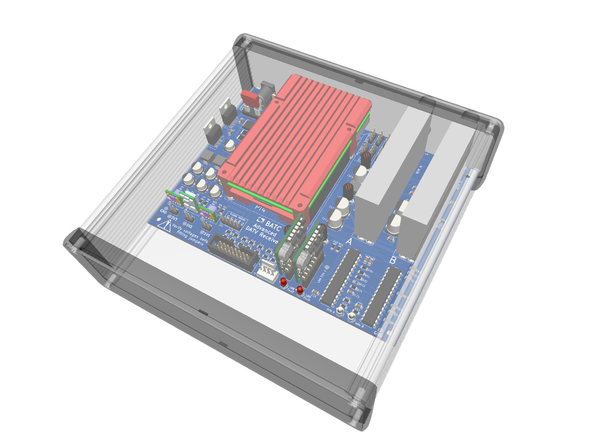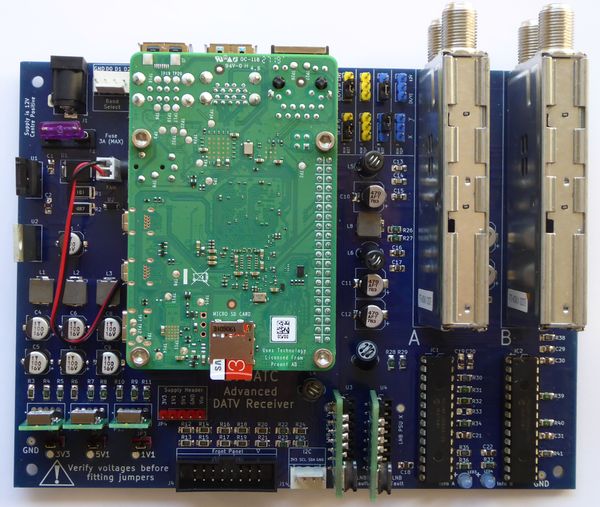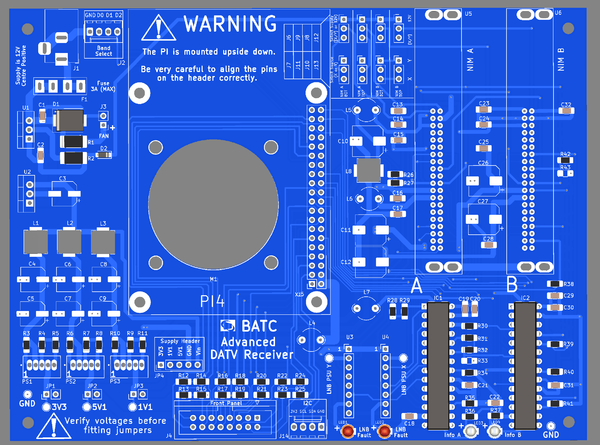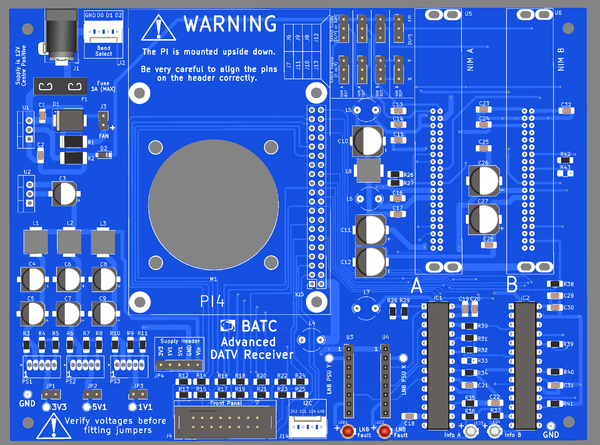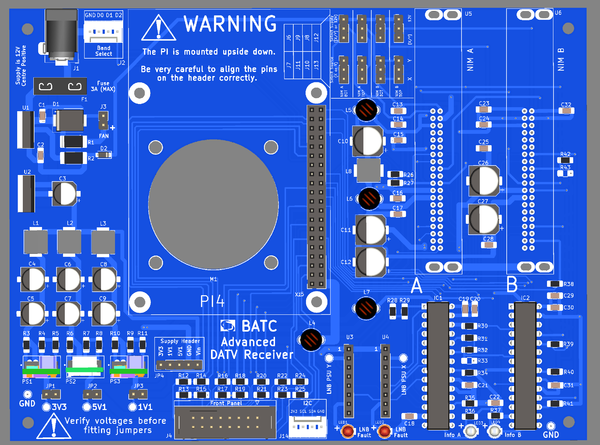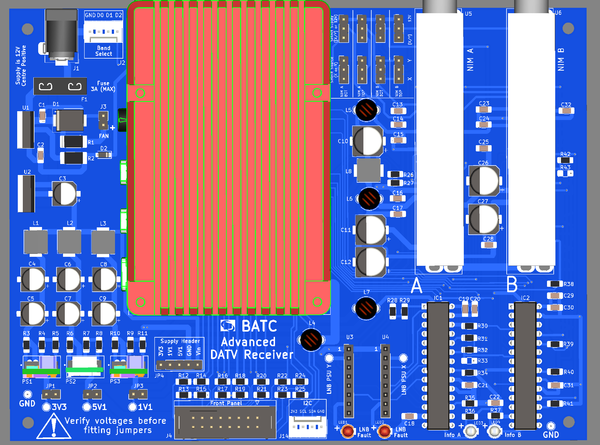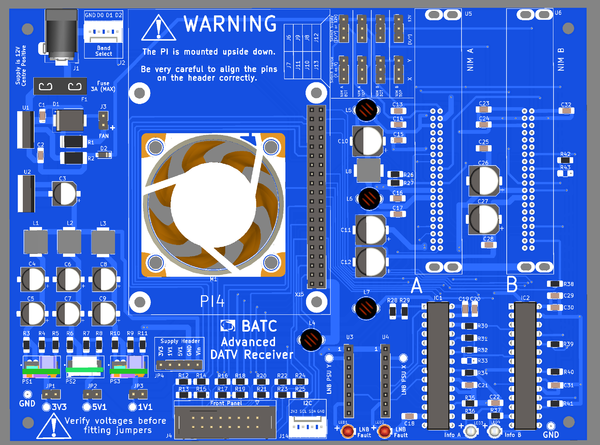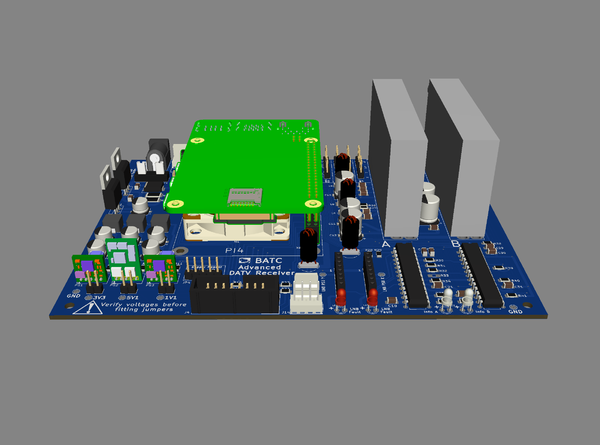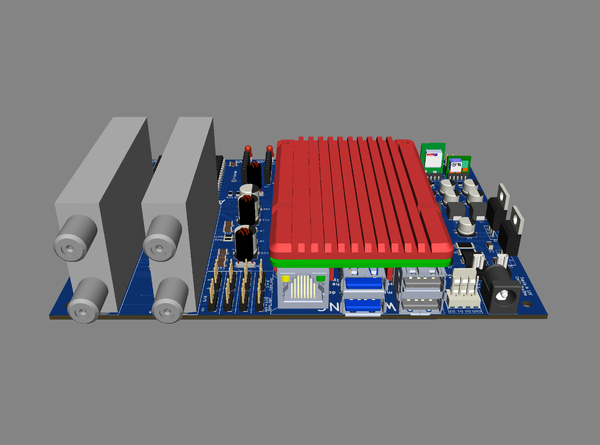Difference between revisions of "Advanced receiver hardware"
| Line 4: | Line 4: | ||
[[File:Boxed.png|600px|center|Boxed]] | [[File:Boxed.png|600px|center|Boxed]] | ||
| − | [[File: | + | [[File:Built Receiver.jpg|600px|center|Boxed]] |
==Applications== | ==Applications== | ||
Revision as of 11:49, 10 March 2021
The BATC advanced receiver hardware is a PCB designed to host up to 2 Serit FTS4334L or FTS4335 NIMs, which can receive DVB-S or DVB-S2, and a Raspberry Pi4.
Applications
The first application to use the advanced receiver hardware will be the Winter Hill receiver project which is a multi-channel DVB-S2 receiver running on a RPi desktop.
Hardware Build
Schematic is here: File:Winterhill.pdf
BOM is here: File:Winterhill BOM.xlsx
It is best to build this in order of component height. It took the author about 3 hours. There is an old proverb, a man with a watch knows the time. A man with two watches is never sure. While working with SMT, if you make a mistake, having two soldering irons to had is a great help when removing misplaced components. The other essential trick is to have the right tools for the job, a fine tip iron and thin, ideally 0.3mm solder. With experience you can use bar solder and a poker, but you are on your own there. Plenty of light and magnification is a must. If you don't have a magnifier then some +2 or +3 reading glasses might help those with normal vision.
Step 1
Starting with an unpopulated PCB fit all the parts shown, Resistors, Ceramic capacitors, Diodes, Inductors:
Step 2
Next fit the 2 PICs and 4 LEDs - ideally use IC sockets for the PICs.
Step 3
Next fit the Electrolytic capacitors
Step 4
Now fit the pin headers and fuse holder:
Step 5
Then the DC jack and remaining headers EXCEPT to PI GPIO header.
Step 6
Next the regulators and ferrite chokes:
Step 7
Now for the PI GPIO header. This requires thought and care. It needs to be at the correct height above the PCB and that depends on how you plan to mount the PI and if it has a heatsink case or not. Test fit the header to the PI and mount the PI on the PCB, then the header will be in the correct place. Removing the header afterwards is almost impossible without damaging the PCB so take time to get this right. Best now remove the PI to prevent damage, or treat it with care if you choose not to. If it is in the metal case it will probably be fine.
Fit the fan if required.
Step 8
Once that's done it is time to power up and test the voltages are correct. It won't work if you don't fit the fuse. Ideally use a current limited 12V supply and pay attention to the current, - there should not be any. Make sure the JP1,2,3 jumpers are open. Check for correct voltages and fix if not.
Step 9
If all is well fit the NIM(s). Make sure they are properly seated. Do not use a socket if you want the board to fit in the recommended case, there is insufficient clearance and it won't fit.
Testing
The board is now ready for testing. First fit the PI4 and jumpers JP1, JP2 and JP3. If you test it outside the case use no more than 12V, otherwise U2 will get hot. It needs to be heatsunk to the case. So does U1 if you plan to use it. The current should be under 1A.
If all OK, go to the software installation section. The PI OS needs to be loaded and the PICs need to be programmed.
